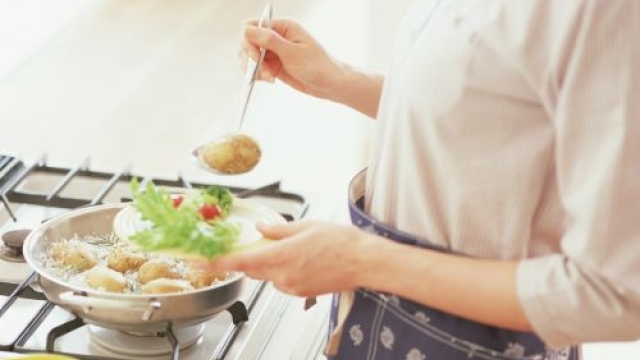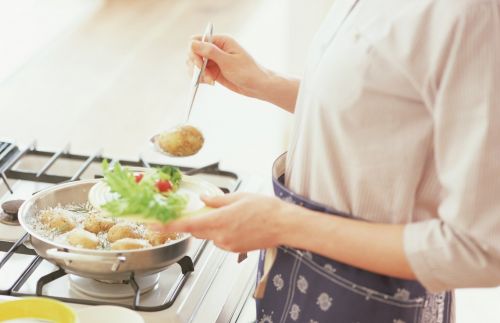
The Art of Reawakening Flavors: Mastering the Art of Food Reheating
Food Reheating: Mastering the Art of Reawakening Flavors
There’s nothing quite like the satisfaction of enjoying a delicious meal, but what happens when you have leftovers? Often, they end up sitting in the refrigerator or freezer, waiting to be enjoyed another day. However, reheating food can be a tricky task. Without the right techniques, your reheated meal can turn out dry, flavorless, or even worse, lose its nutritional value. That’s where the expertise of a company specializing in food reheating comes into play.
With a mission to guide and educate, this company understands the importance of bringing back the flavors and quality of refrigerated or frozen food. Through their meticulous instructions, they are here to ensure that each reheated dish not only maintains its original taste but also provides the necessary nutrition. So, whether it’s a pan-seared salmon, a hearty bowl of soup, or even a slice of homemade pizza, they have the knowledge and expertise to help you master the art of food reheating.
No longer will you have to settle for mediocre leftovers. Instead, with their guidance, you can enjoy your reheated meals with the satisfaction and pleasure that come with the first bite. Join us on a culinary journey as we dive into the world of food reheating and unravel the secrets to unlocking the full potential of reheated dishes. Together, let’s uncover the art of reawakening flavors and elevate your food reheating game to a whole new level.
Importance of Properly Reheating Food
Properly reheating food is a crucial aspect of maintaining flavor, texture, and overall food safety. Whether it’s leftovers from last night’s dinner or a pre-prepared meal, reheating food requires attention to detail to ensure a delightful dining experience. By understanding the importance of properly reheating food, you can avoid flavor loss and potential health risks.
When food is refrigerated or frozen, its flavors can become dull and textures can be compromised. However, with the right reheating techniques, you can revive the original flavors and bring back the deliciousness. Not only does proper reheating enhance the taste, but it also ensures that you are consuming safe and nutritious meals.
Improper reheating can lead to the growth of harmful bacteria, causing foodborne illnesses. By following appropriate reheating methods, you can eliminate the risk of bacterial contamination and enjoy your meal with peace of mind. Understanding the art of food reheating allows you to savor your favorite dishes while keeping your health in check.
To assist in mastering the art of food reheating, there are companies that provide guidance specifically tailored to this purpose. These companies offer expert advice, techniques, and recipes to help you reawaken the flavors of refrigerated or frozen food. By following their instructions diligently, you can elevate your reheating skills and enjoy meals that taste just as good as when they were first cooked.
Properly reheating food is not just about heating it up; it is about reviving the flavors, restoring textures, and ensuring food safety. By acknowledging the significance of this process, you can elevate your culinary experience and create delightful meals from leftovers or pre-prepared dishes. So, let’s dive into the world of food reheating and unlock the secrets behind reawakening flavors.
Guidelines for Reheating Refrigerated Food
When it comes to reheating refrigerated food, there are some important guidelines to keep in mind. Properly reheating your leftovers not only ensures that they are safe to eat but also maintains their flavors and textures. Here are some tips to help you master the art of reheating:
Start with Safe Storage: Before you even think about reheating refrigerated food, it’s crucial to store it correctly in the first place. Ensure that your leftovers are promptly refrigerated in airtight containers or wrapped tightly in foil or plastic wrap. This helps to prevent the growth of harmful bacteria and keeps your food fresh for longer.
Optimal Reheating Methods: The choice of reheating method can greatly impact the quality of your reheated food. The best methods for reheating refrigerated dishes depend on the type of food you have. Generally, using an oven, stovetop, or microwave are the most common and efficient methods. When using a microwave, be sure to cover your food to retain moisture and rotate or stir it occasionally for even heating.
Temperature Considerations: Maintaining the right temperature during reheating is essential for both safety and taste. It is recommended to heat your food to an internal temperature of at least 75°C (165°F) to kill any bacteria that may be present. Use a food thermometer to ensure that the desired temperature has been reached. Additionally, be cautious not to overheat certain delicate dishes, as they may become dry or lose their original texture.
Food

By following these guidelines, you can reawaken the flavors of your refrigerated food and enjoy a tasty and safe meal. Remember to practice proper food handling and always use your senses to assess the quality of reheated dishes.
Guidelines for Reheating Frozen Food
When it comes to reheating frozen food, following proper guidelines is crucial to ensure both taste and nutrition are preserved. By adhering to a few simple steps, you can reawaken the flavors of your favorite dishes. Let’s explore the guidelines for reheating frozen food:
Thawing Before Reheating:
Before diving into the reheating process, it is essential to allow frozen food to thaw properly. This can be done by transferring the food from the freezer to the refrigerator and allowing it to thaw overnight. Avoid thawing food at room temperature, as it can lead to bacterial growth and compromise its safety. Thawing in the refrigerator not only maintains the food’s taste and texture but also minimizes the risk of bacterial contamination.Utilize Proper Reheating Techniques:
When reheating frozen food, it is important to use the right techniques to prevent uneven reheating or the loss of essential nutrients. One effective method is to use the oven, which allows for thorough and even reheating. Simply preheat the oven to the appropriate temperature, place the thawed food in an oven-safe dish, cover it with foil to retain moisture, and heat until it reaches the desired internal temperature.Monitor Internal Temperature:
To ensure the reheated frozen food is safe to eat, it is essential to monitor its internal temperature. Different types of dishes have varying temperature requirements, so always check the recommended internal temperature for the specific food you are reheating. Using a food thermometer will enable you to accurately assess whether the food has reached the appropriate temperature, reducing the risk of foodborne illnesses.
By following these guidelines, you can ensure that reheating frozen food is not only safe but also allows the flavors to shine through. With proper thawing, the use of suitable reheating techniques, and monitoring the internal temperature, you can enjoy delicious and nutritious meals, without compromising on taste or quality.

